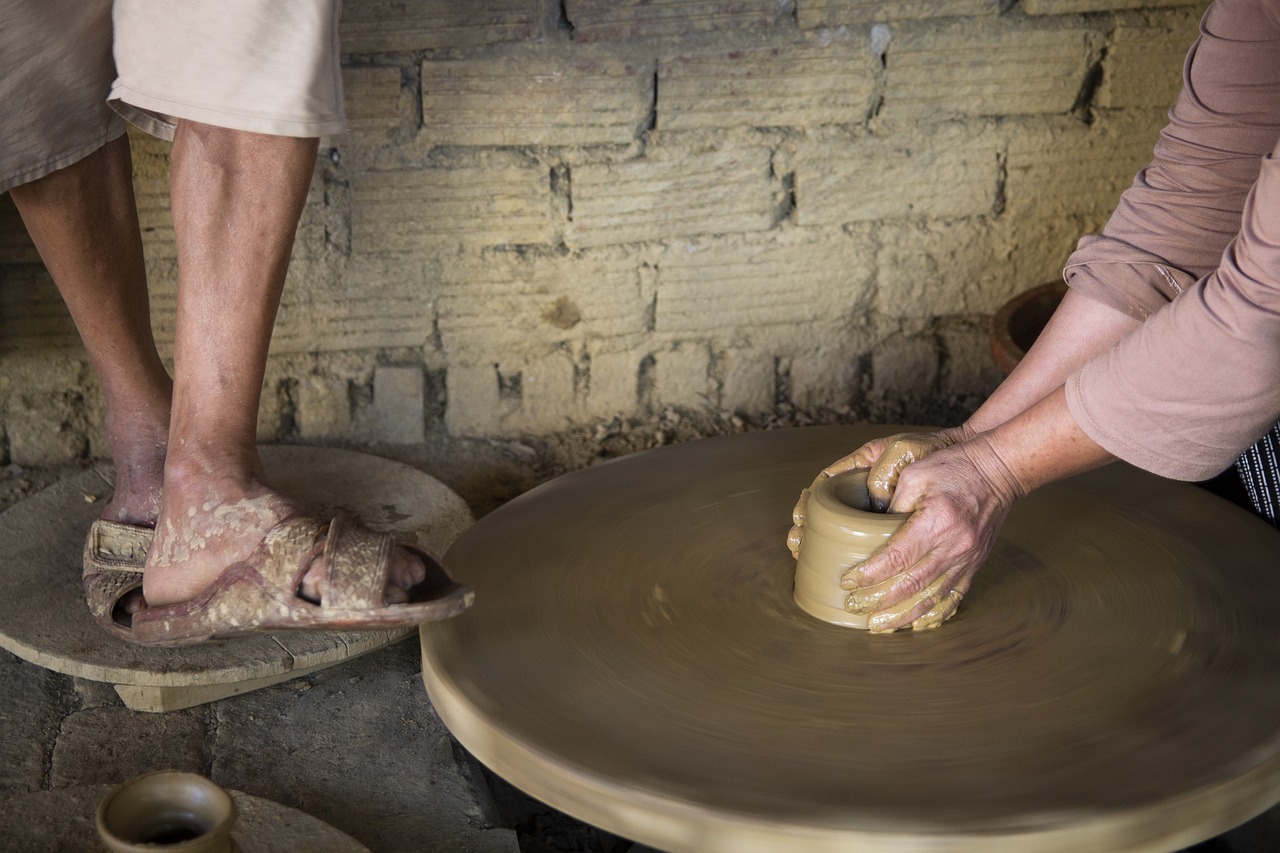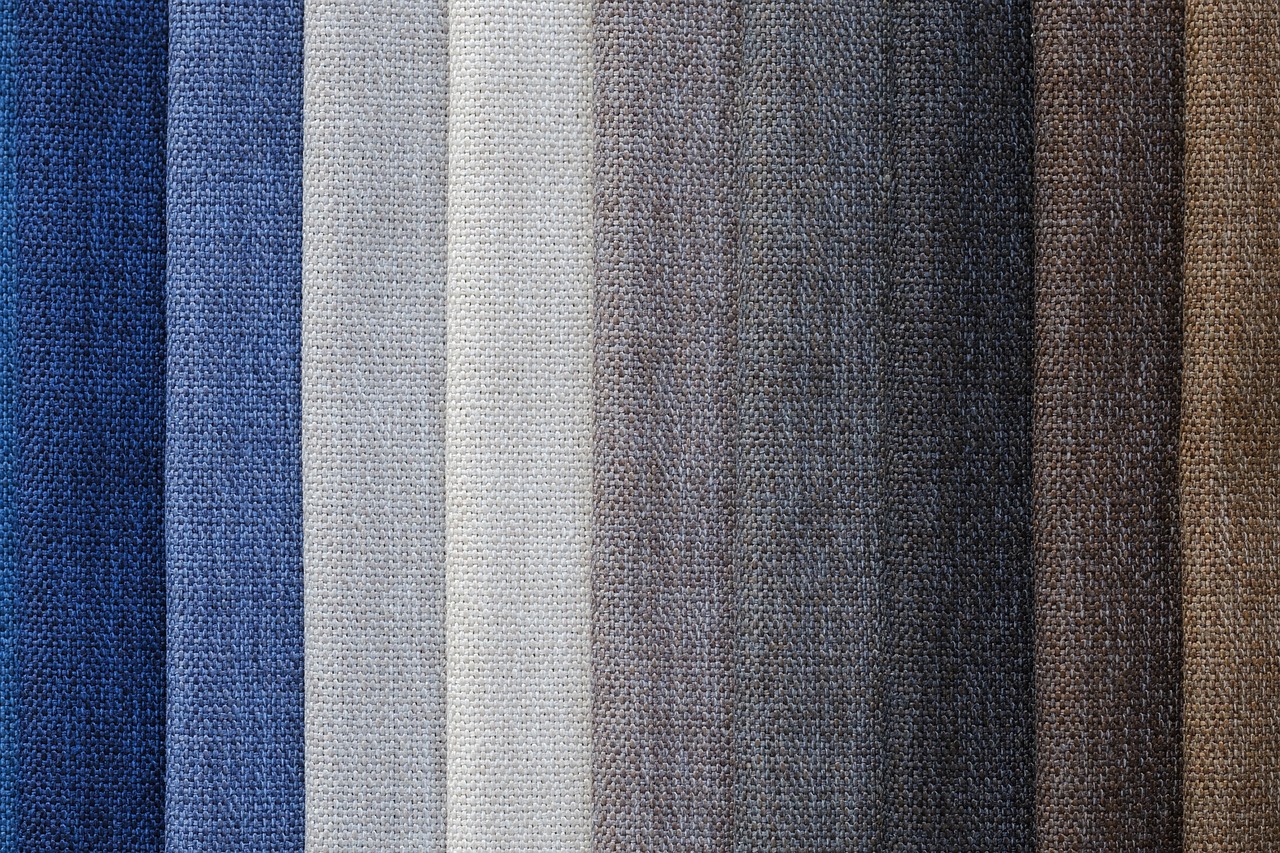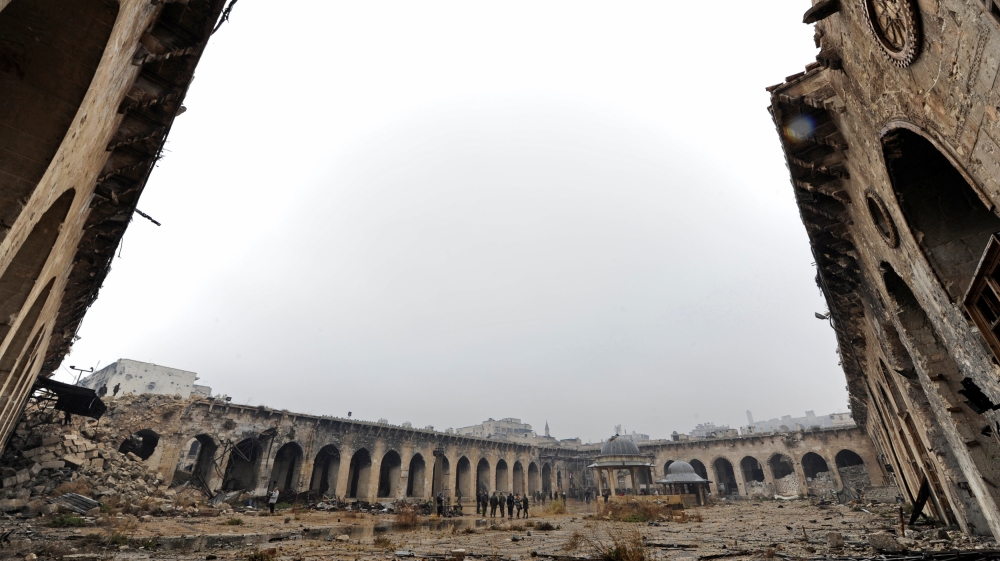Introduction
Aleppo, a city steeped in history and cultural diversity, has long been celebrated for its rich artistic heritage. While its ancient architecture and fortifications often take center stage, the city’s artistic contributions are equally remarkable. Among the treasures that define Aleppo’s artistic legacy are its exquisite mosaics, intricate pottery, and vibrant textiles. In this article, we delve into the world of Aleppo’s artistic traditions, exploring how these enduring forms of expression have shaped the city’s identity and continue to captivate art enthusiasts worldwide.
Aleppo, a city steeped in history and cultural diversity, has long been celebrated for its rich artistic heritage. While its ancient architecture and fortifications often take center stage, the city’s artistic contributions are equally remarkable. Among the treasures that define Aleppo’s artistic legacy are its exquisite mosaics, intricate pottery, and vibrant textiles.
Mosaics: A Timeless Art Form One of the most captivating aspects of Aleppo’s artistic heritage is its mosaic artistry. Mosaics, intricate patterns formed by arranging small, colored pieces of glass, stone, or tile, have graced the city’s structures for centuries. These mosaics tell stories of the city’s past, from its earliest days to the height of its cultural flourishing. From the geometric motifs adorning ancient buildings to the intricate depictions of historical and mythological scenes, Aleppo’s mosaics are a testament to the creativity and craftsmanship of its artisans.
Pottery: A Tradition of Elegance Aleppo is also renowned for its pottery, a tradition that spans millennia. The city’s potters have crafted an array of elegant and functional ceramics, from delicately painted plates to ornate vases. Each piece is a work of art, reflecting the fusion of various cultural influences that have shaped Aleppo over time. The intricate designs and vibrant colors of Aleppo’s pottery add a touch of sophistication to both daily life and special occasions.
Textiles: The Fabric of Aleppo’s Culture The textile arts in Aleppo are a vibrant tapestry of colors, patterns, and stories. The city’s skilled weavers and artisans have produced textiles that are not only visually stunning but also steeped in cultural significance. Whether it’s the intricate patterns of Aleppo silk, the bold colors of traditional garments, or the delicate embroidery adorning fabrics, textiles in Aleppo reflect the diverse influences that have converged in this cosmopolitan city.
Aleppo’s artistic heritage is not confined to the past; it continues to thrive in the present day. Artisans and craftsmen are dedicated to preserving these traditions, ensuring that Aleppo’s artistic legacy remains a source of inspiration and cultural enrichment. The city’s artistic expressions are not mere relics of history but living testaments to the enduring spirit of creativity and craftsmanship that define Aleppo’s identity. As the city rebuilds and rejuvenates, its artistic traditions serve as a beacon, guiding the way toward a brighter cultural future.
Looking for more insights? You’ll find them right here in our extended coverage: Browse Volumes – National Museum of Asian Art
Mosaics have been a hallmark of Aleppo’s artistic heritage for centuries. These intricate designs, composed of small, colored pieces of glass, stone, or ceramic, adorn the walls and floors of historic buildings, palaces, and mosques. The Umayyad Mosque, a UNESCO World Heritage site, boasts some of the most stunning mosaics in Aleppo. These intricate patterns and geometric designs not only showcase the skill of Aleppo’s artisans but also reflect the influence of various cultures that have passed through the city.
Mosaics, with their timeless allure, have been an unmistakable hallmark of Aleppo’s rich artistic heritage for countless centuries. These exquisite creations, painstakingly composed of minuscule, colorful fragments of glass, stone, or ceramic, have graced the walls and floors of historic edifices, palaces, and mosques throughout the city. Among these architectural treasures, the Umayyad Mosque, an esteemed UNESCO World Heritage site, stands as a resplendent testament to Aleppo’s mosaic craftsmanship.
The mosaics within the Umayyad Mosque are not mere decorative embellishments; they are veritable masterpieces that unfold stories of skill, dedication, and cultural exchange. Every intricate pattern and geometric design is a testament to the consummate artistry of Aleppo’s artisans, whose nimble fingers wove together threads of history, tradition, and innovation.
These captivating mosaics, characterized by their vibrant hues and intricate detailing, bear witness to the profound influence of diverse cultures that have traversed Aleppo’s storied streets. Elements of Greco-Roman, Byzantine, and Islamic aesthetics are interwoven into these mosaic patterns, showcasing how the city has served as a melting pot of artistic influences over the ages.
The mosaics of Aleppo, while undeniably stunning in their aesthetic appeal, offer more than mere visual splendor. They encapsulate the very essence of Aleppo’s history—a history shaped by trade, cultural exchange, and the coexistence of civilizations. They remind us that art has the remarkable ability to transcend boundaries and connect us across time and space.
In gazing upon Aleppo’s mosaics, one is transported not only to a world of mesmerizing beauty but also to an appreciation of the city’s enduring legacy as a guardian of art, culture, and history. These masterful works of mosaic art are not relics of the past; they are living testaments to Aleppo’s unwavering commitment to preserving and celebrating the artistic treasures that define its soul.
Explore this link for a more extensive examination of the topic: Browse Volumes – National Museum of Asian Art

Aleppo’s pottery tradition is equally noteworthy. Dating back to ancient times, Aleppo’s potters have been creating exquisite ceramics that blend form and function. Traditional techniques, such as hand-painting and glazing, have been passed down through generations. The city’s pottery often features intricate patterns and motifs, showcasing a blend of Islamic and Mediterranean influences. From delicate tea sets to decorative tiles, Aleppo’s pottery is a testament to the city’s commitment to preserving its artistic heritage.
Aleppo’s legacy in the realm of pottery is nothing short of remarkable. This age-old tradition, with roots that reach deep into the annals of history, has been a testament to the city’s enduring commitment to the preservation of artistic heritage.
Dating back to antiquity, Aleppo’s skilled potters have been crafting ceramics that seamlessly marry form and function. Their time-honored techniques, handed down through the ages, reflect a profound dedication to the art. Hand-painting, glazing, and firing are all part of this intricate craft, resulting in pieces that are not just utilitarian but exquisite works of art.
One cannot help but be captivated by the intricate patterns and motifs that adorn Aleppo’s pottery. These designs, often a fusion of Islamic and Mediterranean influences, tell a story of cultural exchange and artistic innovation. They speak of a city that has been a melting pot of ideas and aesthetics for centuries, where diverse influences have converged to create something truly unique.
From delicate tea sets that invite moments of shared warmth to decorative tiles that grace the city’s architecture, Aleppo’s pottery is a testament to the city’s rich artistic tapestry. These ceramics are more than just objects; they are vessels that carry the soul of Aleppo, each piece a testament to the city’s enduring commitment to preserving its cultural heritage.
In a world where the pace of change can often erode the bonds to tradition, Aleppo’s pottery stands as a reminder of the importance of honoring the past. It is a testament to the enduring value of craftsmanship, artistry, and the timeless beauty that can be created when tradition and innovation converge. Aleppo’s pottery is not just a testament to the city’s past; it is a living testament to its vibrant artistic spirit, one that continues to inspire and captivate all who encounter its exquisite creations.
Additionally, you can find further information on this topic by visiting this page: Arts of the Abbasid Caliphate

Aleppo’s textile industry is steeped in history and renowned for its craftsmanship. The city’s markets, or suqs, are a treasure trove of vibrant fabrics, textiles, and carpets. Skilled weavers and artisans create intricate patterns and designs that have captivated collectors and connoisseurs for centuries. Aleppo’s textiles often feature a blend of traditional Middle Eastern motifs, and their exquisite quality makes them highly sought after both locally and internationally.
“Aleppo’s textile industry is a testament to the city’s rich history and a celebration of craftsmanship that has spanned centuries. As you wander through the bustling suqs, you’ll discover a world of vibrant fabrics, exquisite textiles, and breathtaking carpets.
What sets Aleppo’s textile artisans apart is their unmatched skill and dedication to their craft. With deft hands and unwavering attention to detail, they breathe life into intricate patterns and designs that have enthralled collectors and connoisseurs for generations. Each piece is a masterpiece in its own right, a labor of love that showcases the artistry of Aleppo.
The textiles of Aleppo tell a story of cultural fusion and artistic expression. They often feature a harmonious blend of traditional Middle Eastern motifs, where history and heritage intertwine. These patterns carry with them the echoes of generations past, a living testament to Aleppo’s enduring cultural legacy.
Aleppo’s textiles are not just prized locally; they have earned international acclaim. Their exceptional quality and timeless beauty make them highly sought after by collectors and enthusiasts around the world. Each piece is a piece of history, a slice of Aleppo’s soul woven into every thread.
In celebrating Aleppo’s textile industry, we celebrate more than just craftsmanship; we celebrate a living tradition that continues to thrive. These textiles are not mere fabrics; they are a tangible link to Aleppo’s storied past and a testament to the enduring artistry of its people.”
Explore this link for a more extensive examination of the topic: Wine bearers in landscape, a Safavid textile

In recent years, Aleppo has faced significant challenges due to conflict and unrest. However, efforts to safeguard its artistic heritage have remained a top priority. Organizations and individuals dedicated to preserving Aleppo’s cultural legacy have worked tirelessly to restore damaged artworks, protect historic sites, and revitalize the city’s artistic traditions.
Despite the turbulent years Aleppo has endured, its artistic heritage remains a resilient beacon of hope. In the face of conflict and unrest, a collective commitment to preserving the city’s cultural legacy has emerged as a powerful force for positive change.
Restoring Damaged Artworks: The scars of conflict have taken a toll on Aleppo’s artistic treasures. However, restoration efforts have been nothing short of miraculous. Skilled artisans and conservationists have painstakingly repaired and revived damaged artworks, breathing new life into pieces that tell the story of Aleppo’s artistic journey.
Protecting Historic Sites: Aleppo’s historic sites, once threatened by the ravages of war, are now safeguarded with renewed determination. Preservation initiatives have galvanized to protect the city’s architectural gems and archaeological wonders. The restoration of ancient structures stands as a testament to Aleppo’s resilience and unwavering commitment to its heritage.
Revitalizing Artistic Traditions: Aleppo’s artistic traditions, although challenged, have not been extinguished. Artists and craftsmen, driven by their love for their city, have continued to create and innovate. Traditional crafts, music, and performing arts are experiencing a resurgence, breathing vitality into Aleppo’s cultural scene.
Global Solidarity: The world has rallied in support of Aleppo’s cultural preservation. International organizations and individuals have joined hands with local initiatives, pooling resources and expertise to ensure that Aleppo’s artistic heritage endures. This global solidarity underscores the universal importance of safeguarding cultural treasures.
A Beacon of Resilience: Aleppo’s commitment to its artistic heritage is a powerful symbol of resilience. It sends a resounding message that, even in the face of adversity, culture and creativity thrive. Aleppo’s artists and cultural guardians are a testament to the indomitable spirit of a city that refuses to be defined solely by its challenges.
As Aleppo rebuilds and renews its cultural legacy, it demonstrates that art and heritage are not merely relics of the past; they are living forces that inspire, heal, and unite. The city’s commitment to preserving its artistic heritage is a shining example of how culture can serve as a bridge to a brighter future. Aleppo’s journey of resilience and cultural preservation is a testament to the enduring power of art and the human spirit.
For a comprehensive look at this subject, we invite you to read more on this dedicated page: The Dome of the Rock (Qubbat al-Sakhra)

Conclusion
Aleppo’s artistic heritage, characterized by its magnificent mosaics, intricate pottery, and vibrant textiles, is a testament to the city’s enduring creativity and cultural significance. Despite the challenges it has faced, Aleppo’s commitment to preserving its artistic traditions remains unwavering. As the city rebuilds and its artisans continue to craft beautiful works of art, Aleppo’s artistic heritage continues to thrive, captivating the world with its timeless beauty and cultural richness.
Aleppo’s artistic heritage, a tapestry woven with magnificent mosaics, intricate pottery, and vibrant textiles, stands as a testament to the city’s enduring creativity and profound cultural significance. Through the ebb and flow of history, Aleppo’s artisans have been the custodians of traditions that have transcended time and continue to captivate the hearts and minds of all who encounter them.
In the face of myriad challenges, Aleppo’s commitment to preserving these artistic treasures remains unyielding. The city’s artisans, drawing upon the wellspring of tradition passed down through generations, refuse to let adversity dim the brilliance of their craft. Instead, they have become beacons of resilience, wielding their skills like brushes on a canvas, restoring and reviving what was lost.
As the city rebuilds, the echoes of Aleppo’s artistic legacy resonate with each brushstroke, each meticulously placed tile, and each vibrant thread woven into the fabric of its textiles. It is a testament to the unwavering spirit of a city that refuses to surrender to the passage of time or the trials of history.
These artisans, often working in the shadow of ancient ruins, are not merely preserving the past; they are breathing life into it. Their hands shape the future as they meticulously restore mosaics to their former glory, recreate pottery with intricate precision, and weave textiles that tell stories of Aleppo’s rich cultural heritage.
Each work of art that emerges from Aleppo’s workshops and studios is a testament to the city’s resilience and its enduring commitment to the artistic traditions that define it. These creations are not frozen in time; they are living, breathing expressions of a culture that refuses to be silenced.
The world watches in awe as Aleppo’s artistic heritage continues to thrive, not as a relic of the past, but as a vibrant, evolving force that enriches the city’s present and future. Aleppo’s artisans are not merely artists; they are storytellers, each piece they create a chapter in the ongoing saga of a city that, through art, perseveres, inspires, and connects with the world.
Additionally, you can find further information on this topic by visiting this page: Eames House Conservation Management Plan
More links
For a comprehensive look at this subject, we invite you to read more on this dedicated page: Arts of the Abbasid Caliphate
